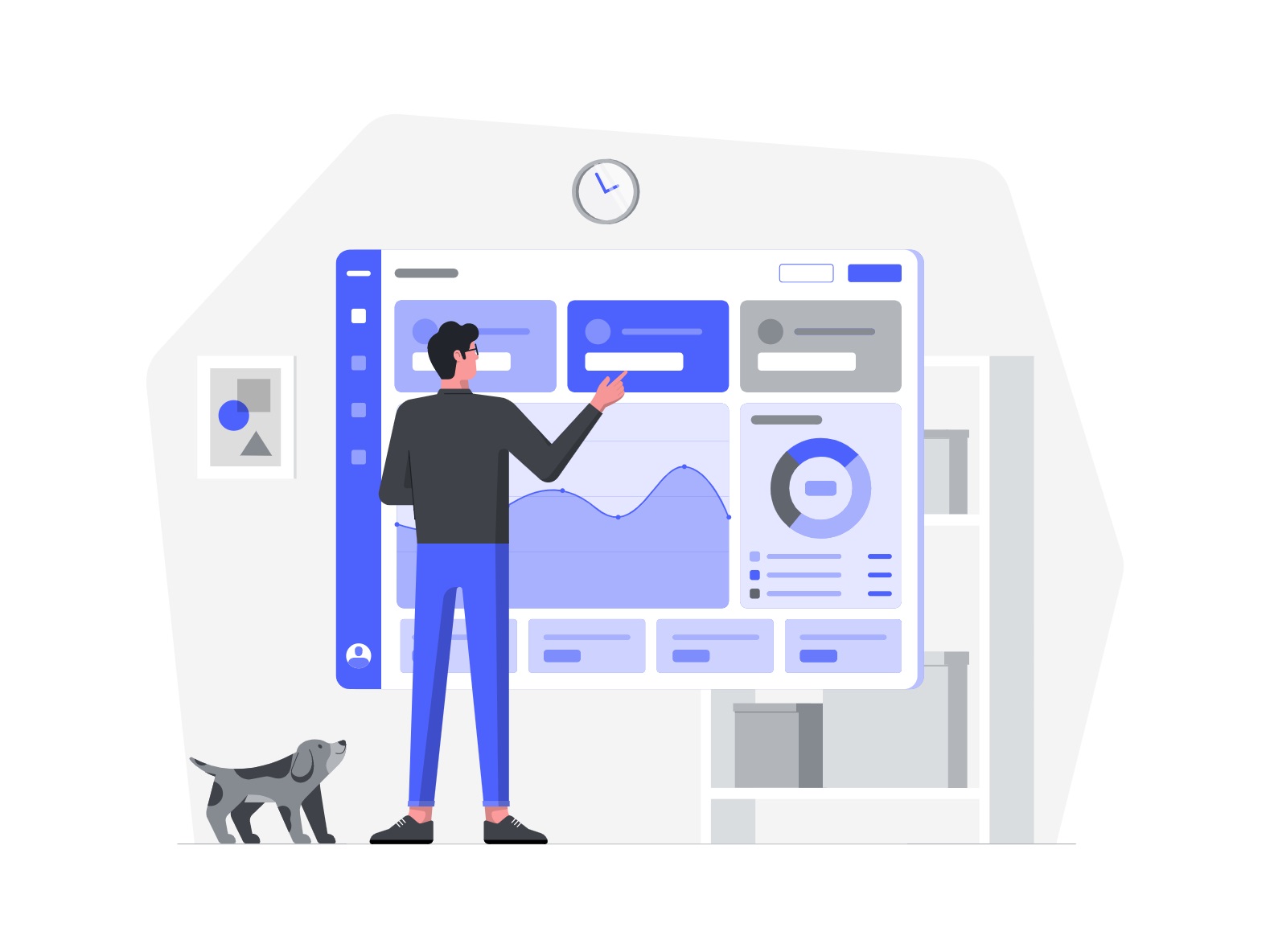What is Brand Development?
Brand development is the process of creating a unique identity of your brand, product, or service that accurately and precisely defines the function of your brand and distinguishes you from your competition. Brand development is considered a foundational step on which all future branding and marketing initiatives rely on.
The brand development process has the main goal of creating and strengthening a company's brand image that eventually contributes to conversion, revenue generation, and overall returns.
The process moves through several phases, where firstly the team works on creating a solid strategy tailor-made for that particular brand. The strategy should intrinsically align with the companies goals and objectives to create a consistent image.

Then, the team works on producing a logo, color scheme, tagline, and the showroom or website of the brand. These elements will primarily communicate your brand to your customers.
Lastly, periodic initiatives are developed to further strengthen the brand and innovatively market your product following the popular trends of the market.
Brand development is never a one-time initiative but is always an ongoing process. As the market dynamics and the overall culture changes, teams have to align their brand values with the new and upcoming trends.
What is a Brand?
Before we understand how teams can develop a brand development strategy, let’s first define what a brand is. A brand can be defined as a firm’s reputation or visibility in its dominant marketplace. In a nutshell, a brand will include everything from a company's logo to slogan to its design. A logo maker is often the first step in creating a visual identity for a brand.
Any attribute of a company that is recognizable and unique can be part of its overall brand. It is essentially the deliberate identity that a company constructs in a market. When a customer thinks of a company, the attributes they assign to that company can be termed as their brand.
Difference between Brand Development and Branding
Now, you might be wondering what the difference between branding and brand development is. Most commonly, you probably have heard of the term branding and not as much about brand development.
To simply define them,
Brand development is the process of developing a strategy for promoting a brand. The goal here is to mainly maintain a set standard the brand is known for as well as cultivate trust from customers.
Branding involves all the executive-level activities that use real communication mediums to improve the brand of a company. All the activities from social media channels to outreach events that contribute to a positive brand image can be referred to as branding.
Both these terms sound the same and are obviously very closely related. There is only a subtle difference between them but the end goal is to create a strong identity for the brand.
Main Steps in Brand Development
The process of brand development has some core phases that each team has to navigate through. In the below, we have explained how teams can go about creating their own brand development strategies.
1. Market Research - Know all about your Business
Before you begin to design a proper strategy you need to gain some basic understanding of the market and the business you are running.
This is the starting point in developing a comprehensive and informed brand development plan. Through market research, your objective is to gain knowledge about all the current trends and customer preferences that will inform your plan.
A good way to approach research is by asking a few questions first. These questions should precisely define your clientele, your target customers, your competitors, and every specific detail about your business. You can do this by asking the following questions.
- Who is my target customer base?
- Who are my target clients?
- What notion of my brand do I want to built-in my customer’s eyes?
- How do I want to make my customer feel?
- What is my core objective with respect to my business?
- What are the key differences between your company and your competitors?
- What problem do I wish to solve?
- Ultimately, what identity do I wish to build?
Also understanding your relative position in the industry is very important. A deep dive into your weaknesses and strengths can be done by a simple SWOT analysis of your business. Once you have jotted down all the details about your business, you need to analyze this information.
The core of any branding exercise is the customer. So it’s important you view your brand from your customer’s perspective. Focus on their core needs and deeply analyze what their expectations are. The customer/client’s needs and your business’s core values will form the base to your brand development strategy.
Ultimately think about what results your business will provide your user. Your brand development strategy should focus on selling those results to the customers; that is thecore productinstead of a physical product.
2. Determine your Target User-Base - Know your Customer
Once you have outlined all the theoretical information about your business, the next step is to determine your target audience. Your audience is any demographic sector that can find the use of your product.
Among the target audience, you need to understand the relative popularity of your product and which sector is most likely to buy it. It’s important you precisely define your target customer base.
After defining your target audience, next, you’ll have to begin reaching out to them. The important thing here is to approach your customers with a helpful mindset. To reach out to your customers, you can -
1. Create SEO focused relevant content
Your customer is most likely searching on the web to solve their problem. By creating SEO-focused guides and how-to articles you can reach the base that actually needs your product. This is a good way to get a constant flow of organic traffic. The goal here is to create content that is helpful, enticing, and engaging for your customer.
2. Generate Surveys and get feedback
As mentioned above, the customer’s perspective is at the center of all branding activities. So before you devise a campaign, first you’ll have to find out the consensus about your brand. Through regular feedback, you can know what your customers think about you. This can also help identify pain points in thecustomer journeythat must be addressed.
3. Advertisement
For a generic brand, advertising your brand on an appropriate medium can do wonders. Your market research should tell you which platforms your audience most heavily uses. Focusing your ad spent on those platforms can yield tremendous results.
3. Create your Brand’s Positioning and Messaging
Like any campaign, having a consistent message based on a consistent position is important for your brand development strategy.
Brand positioning is influenced by your core customer base and also somewhat by culture. A culturally detached brand finds it very difficult to connect with its audience. Both your business’s core values and your user’s core values will go into informing your brand’s positioning.
Based on the brand positioning, a consistent messaging campaign is created that will directly reach the customer. The messaging is not a company memo or Christmas card that is periodically sent to the customers. Marketing teams have to come up with creative ways to deliver this message.
4. Create mediums and resources to spread brand awareness
This part of the brand development process is where the branding bit begins. Teams have to create resources and content that spreads brand awareness.
All content or activity that adds to the identity of your brand is a means for branding. The brand positioning and messaging will be at the heart of all your branding initiatives.
Some elements that businesses can work on to create a brand image is as follows:
- Brand Logo
- Design
- Tagline/Slogan
- A consistent design or color scheme for your website
- Relevant content + content strategy
The above-mentioned elements are almost essentials that all brands will uniquely design. But there are a few other ways a business can stay connected and reach its audience. These branding materials are as follows
- Blogs - These blogs should very importantly focus on relevant content that your customers are interested in.
- YouTube Videos - These videos can range from how-to guides or tutorials to a topic or domain-focused webinars or discussions.
- Social Media Interactions - Social media is a great medium to reach your customers directly and solve their problems. It gives direct access to your customers and the communication can take place 2 ways.
- Outreach Events - If you are brand is focused on a particular niche, having an outreach physical event can also contribute to your brand. These can be social outreach events that benefit the entire community.
5. Manage your Branding Initiatives - Track your Progress
Finally, as mentioned above, brand development is forever an ongoing process. So once you have established your brand you need to effectively manage the progress.
This phase of the brand development process predominantly has a lot of tracking activities. Here teams track their overall progress, the changing customer sentiments, and the marketing trends. Future initiatives are based on these factors.
Consistently tracking metrics and setting improvements goals can guarantee longevity and sustainable growth for your business.




 Entrepreneurship
Entrepreneurship





